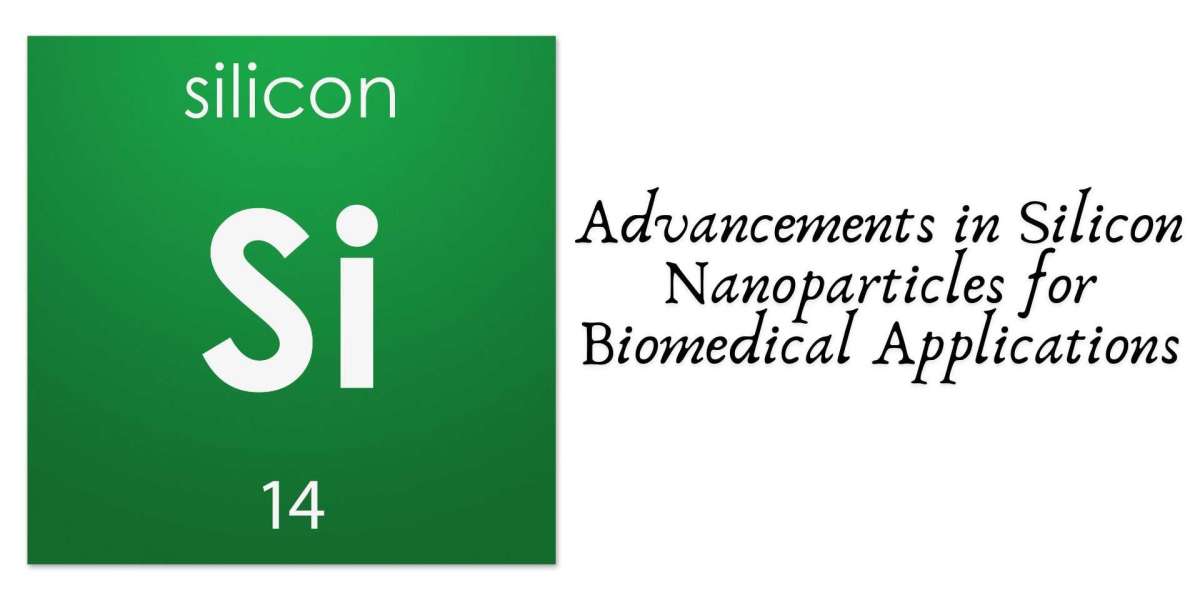Silicon nanoparticles have emerged as a promising material in the field of biomedicine, offering a range of applications from drug delivery to bioimaging. As the field of nanotechnology continues to evolve, the unique properties of silicon nanoparticles—such as their biocompatibility, tunable optical properties, and biodegradability—are being harnessed to develop innovative solutions for complex biomedical challenges. This article delves into the latest advancements in silicon nanoparticles for biomedical applications, highlighting their potential impact on healthcare.
Introduction to Silicon Nanoparticles
Silicon nanoparticles (SiNPs) are tiny particles of silicon, typically ranging from 1 to 100 nanometers in diameter. Due to their nanoscale size, they exhibit unique properties that differ significantly from bulk silicon. These properties include enhanced photoluminescence, increased surface area, and the ability to interact with biological systems at the molecular level. The versatility of SiNPs makes them ideal candidates for a wide range of biomedical applications, including drug delivery, bioimaging, and biosensing.
Drug Delivery Systems
One of the most significant advancements in the use of silicon nanoparticles is in the development of targeted drug delivery systems. Traditional drug delivery methods often suffer from inefficiencies, such as poor bioavailability and non-specific distribution, which can lead to side effects and reduced therapeutic efficacy. Silicon nanoparticles offer a solution to these challenges through their ability to be functionalized with specific ligands, enabling targeted delivery to diseased cells or tissues.
Recent studies have demonstrated that SiNPs can be engineered to release drugs in a controlled manner, either in response to specific biological triggers or over a sustained period. This controlled release reduces the frequency of dosing and minimizes the risk of side effects. Additionally, SiNPs can be designed to cross biological barriers, such as the blood-brain barrier, enabling the treatment of previously inaccessible conditions.
Bioimaging and Diagnostics
Silicon nanoparticles are also making significant strides in the field of bioimaging. Their unique optical properties, particularly their ability to emit fluorescence, make them excellent contrast agents for imaging techniques such as fluorescence microscopy and magnetic resonance imaging (MRI). Unlike traditional imaging agents, SiNPs can be tuned to emit light at specific wavelengths, allowing for high-resolution imaging of biological tissues.
Moreover, silicon nanoparticles have been explored as carriers for contrast agents, enhancing the sensitivity and specificity of imaging techniques. For instance, SiNPs conjugated with fluorescent dyes or magnetic nanoparticles have been used to improve the detection of cancer cells, enabling earlier diagnosis and more accurate monitoring of disease progression.
Biosensing and Detection
The high surface area and tunable surface chemistry of silicon nanoparticles have led to their use in biosensing applications. SiNPs can be functionalized with biomolecules such as antibodies, enzymes, or DNA, enabling them to detect specific biological targets with high sensitivity and specificity. This capability has been leveraged to develop biosensors for detecting various biomarkers, including those associated with infectious diseases, cancer, and cardiovascular conditions.
Recent advancements have focused on integrating SiNPs into point-of-care diagnostic devices, which offer rapid and accurate detection of diseases at the patient's bedside or in remote settings. These biosensors have the potential to revolutionize healthcare by enabling early diagnosis and timely intervention, particularly in resource-limited environments.
Theranostics: Combining Therapy and Diagnostics
Theranostics, the combination of therapeutic and diagnostic capabilities within a single platform, is an area where silicon nanoparticles are showing great promise. SiNPs can be designed to deliver therapeutic agents while simultaneously monitoring treatment efficacy through imaging or biosensing. This dual functionality allows for real-time feedback and personalized treatment, improving patient outcomes and reducing the risk of overtreatment or undertreatment.
For example, SiNPs loaded with chemotherapeutic drugs can be tracked using imaging techniques to ensure that the drug is delivered precisely to the tumor site. Simultaneously, the nanoparticles can monitor the tumor's response to treatment, allowing clinicians to adjust the therapy as needed.
Biodegradability and Biocompatibility
One of the critical factors in the biomedical application of nanoparticles is their safety profile. Silicon nanoparticles have an advantage in this regard due to their biodegradability and biocompatibility. Unlike some other nanoparticles, which can accumulate in the body and cause toxicity, SiNPs can degrade into non-toxic byproducts, such as silicic acid, which is naturally excreted by the body.
Recent research has focused on optimizing the surface chemistry of SiNPs to enhance their biocompatibility further and reduce potential side effects. These advancements are crucial for the clinical translation of SiNP-based therapies, as they ensure that the nanoparticles can be safely administered to patients without causing harm.
Challenges and Future Directions
While silicon nanoparticles hold great promise for biomedical applications, several challenges remain. One of the primary concerns is the scalability of production, as the precise control of nanoparticle size, shape, and surface chemistry is critical for their performance in biological systems. Additionally, there is a need for more extensive in vivo studies to fully understand the long-term effects of SiNPs and to ensure their safety in clinical applications.
Future research is likely to focus on overcoming these challenges and exploring new applications for silicon nanoparticles in biomedicine. For instance, the integration of SiNPs with other nanomaterials, such as gold or graphene, could lead to the development of multifunctional platforms with enhanced capabilities. Additionally, the use of SiNPs in gene therapy, regenerative medicine, and immunotherapy are areas that are expected to see significant advancements in the coming years.
Conclusion
Silicon nanoparticles are at the forefront of biomedical innovation, offering new possibilities for drug delivery, bioimaging, biosensing, and theranostics. Their unique properties, combined with their biocompatibility and biodegradability, make them ideal candidates for a wide range of applications in healthcare. As research in this field continues to advance, silicon nanoparticles are poised to play a critical role in the development of next-generation therapies and diagnostic tools, ultimately improving patient outcomes and transforming the landscape of modern medicine.








